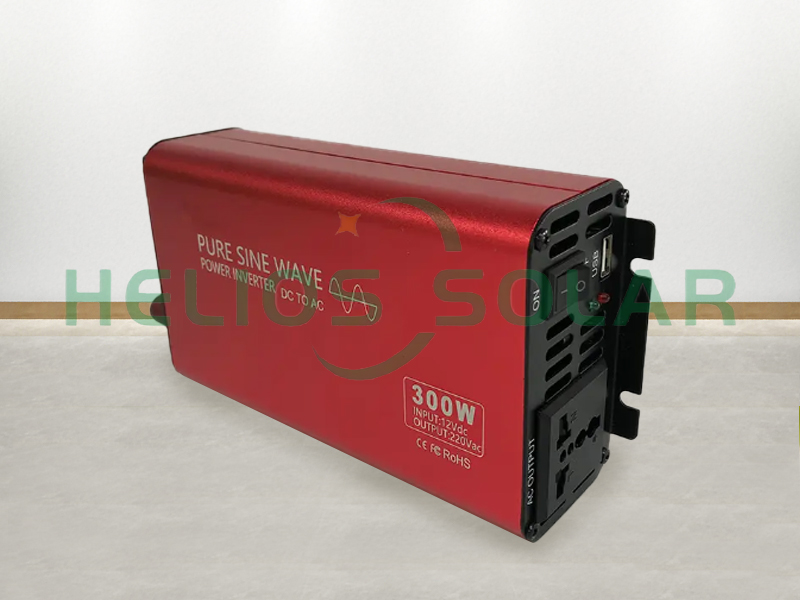A pure sine wave inverter is an important device that converts direct current (DC) power from a battery into alternating current (AC) power, which is used to run most home appliances and electronic devices. When purchasing a pure sine wave inverter, it is important to understand the potential pitfalls to ensure you make an informed decision and choose an inverter that suits your needs.
One of the most common pitfalls to be aware of when purchasing a pure sine wave inverter is the misconception that all inverters labeled “pure sine wave” are of the same quality. In fact, the quality and performance levels of pure sine wave inverters vary widely. Some may produce a cleaner, more stable sine wave output, while others may introduce harmonic distortion and voltage fluctuations. It’s important to carefully research and compare different models to ensure you’re getting a high-quality pure sine wave inverter.
Another pitfall to be wary of is the temptation to prioritize price over quality. While it may be tempting, especially if you’re on a budget, to opt for a cheaper pure sine wave inverter, it’s important to consider the long-term effects of choosing a lower quality inverter. Cheaper inverters may be more prone to failure, have a shorter lifespan, and may not provide the level of performance and reliability required by sensitive electronic equipment. Investing in a higher quality pure sine wave inverter may end up saving you money and frustration in the long run.
When purchasing a pure sine wave inverter, it is also crucial to consider the power requirements of the devices and appliances you plan to run. Some inverters may have a continuous power rating that is lower than their peak power rating, meaning they can only sustain lower levels of power output for longer periods of time. It is important to accurately assess the power requirements of your equipment and select an inverter that can easily handle the load without overburdening it, which could result in inefficiencies and potential damage to the inverter and connected equipment.
Additionally, one must be wary of misleading or exaggerated product specifications. Some manufacturers may exaggerate the capabilities of their pure sine wave inverters, leading consumers to believe they can power more devices than they are actually capable of. It is recommended to read customer reviews, seek advice from reputable sources, and verify the specifications provided by the manufacturer to ensure that the inverter meets your specific requirements.
In addition, the efficiency and standby power consumption of pure sine wave inverters are also important factors to consider. A more efficient inverter will waste less power during the conversion process, extending battery life and reducing operating costs. Conversely, an inverter with high standby power consumption will drain the battery even when no device is connected, resulting in unnecessary energy loss. Understanding an inverter’s efficiency and standby power consumption can help you make informed decisions and choose a model that meets your energy efficiency goals.
Another potential pitfall when purchasing a pure sine wave inverter is overlooking the importance of safety features. The inverter should be equipped with safety mechanisms such as overload protection, over-temperature protection, and short-circuit protection to protect the inverter and connected equipment from potential damage. Additionally, some inverters can offer features such as low-voltage shutdown and automatic voltage regulation, which can further enhance system safety and performance. Prioritizing an inverter with comprehensive safety features can give you peace of mind and protect your investment in the long term.
It is also important to consider the build quality and reliability of a pure sine wave inverter. Investing in an inverter with a rugged and durable construction ensures its longevity and performance, especially in demanding environments or applications. Look for inverters with rugged enclosures, efficient cooling, and reliable internal components to ensure they can withstand the rigors of daily use.
Additionally, technical support, warranty coverage, and after-sales service should not be overlooked when purchasing a pure sine wave inverter. If a technical issue or concern arises, having responsive customer support and solid warranty coverage can make a big difference in resolving the issue and ensuring the continued operation of your inverter. Researching a manufacturer’s reputation and its commitment to customer service can provide valuable insights into the level of support you can expect after purchasing an inverter.
In summary, purchasing a pure sine wave inverter requires careful consideration of various factors to avoid potential pitfalls. By researching the quality, power requirements, efficiency, safety features, build quality, and after-sales support of different inverters, you can make an informed decision and choose a high-quality inverter that meets your specific needs. Prioritizing the long-term performance and reliability of your inverter over short-term cost savings ultimately results in a more satisfying and trouble-free experience with your power conversion system.
If you need inverters, please feel free to contact pure sine wave inverters supplier Radiance for a quotation.
Post time: Sep-05-2024


